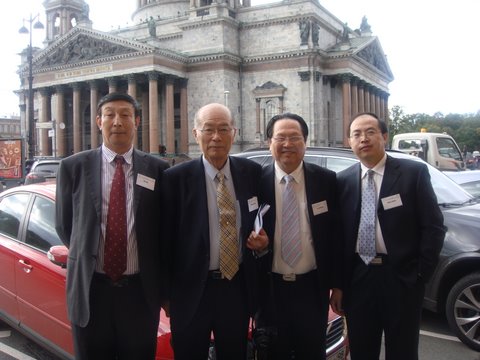Recently, I attended the 15th World Congress held by the International Society of Cryosurgery Cryosurgery on October 1-4, 2009, St. Petersburg, Russia. As a participant, I was delighted to see cryotherapy mature as a treatment that has been affirmed by the medical world, and begin to gain broad clinical application, particularly cancer therapy. To date, surgery remains the first choice as a cancer treatment, but unfortunately, only a small percentage of patients are actually eligible for surgical resection: about 15% for liver cancer, 40% for lung cancer, 5% for pancreatic cancer. After a patient~s cancer is diagnosed, surgical resection is seldom a possibility. For these patients who cannot have surgery, the most common approach is chemotherapy. However, if the local tumor cannot be controlled, the effect of any chemotherapy is often very slim.
Cryotherapy is an excellent alternative surgical option. By switching to cryotherapy, the possibility of complete or partial elimination of the tumor increases by 30-50%. Additionally, the clinical practice and technological developments made in the use of cryotherapy have played a decisive role in the spreading use of cryotherapy. Clinical data and experience has shown that cryotherapy for cancers such as those of the prostate or kidney, can be especially effective due to image-guided percutaneous (through the skin) treatment, as well as the therapies safety when performed near large blood vessels.
At my hospital, Fuda Cancer Hospital, cryosurgery is the most often used surgical method. Although we desire to perform more trials and tests of cryotherapy, it is very difficult to perform the "random" and "double-blind" tests that would further support the effectiveness of cryotherapy. If a cancer patient is before us, and we know that cryotherapy could improve the patients quality of life, and would increase survival period, I believe it would be unethical to deny them a therapy that would benefit them.
In academic discussions, we are often faced with "statistical traps”. When comparing therapies, in statistics, P<0.05 is believed to be more effective. However, if this treatment can only extend a patient~s life for an additional 1-2 months, and the patients need to endure many side effects, what is the value of this effectiveness? As clinicians, we should aim for the long-term survival of patients and improved quality of life. Cryotherapy is a big step forward in helping us to achieve this goal.
Curently, China~s cryotherapy technology and experience is a leader in the medical field. In China alone, nearly 20,000 cases of cryotherapy have been performed. As a major hospital complex, Fuda Cancer hospital has performed more than 5,000 cases to date. However, treatment of diseases has not been limited only to liver and prostate cancer, but has also been extend to other forms of cancer, such as those of the lung and breast.
My hospital initially carried out cryotherapy only for patients with central lung cancer, locally advanced pancreatic cancer and large liver cancer. As a result, Fuda Cancer Hospital has been internationally recognized, and has attracted patients from five continents. However, as cryotherapy continues to develop and be promoted from developing countries such as China, how does one remain at the cutting edge of cryotherapy, while also earning the respect of western medical institutions? It is not easy. The only solution is good search, good practice, and good articles. Ultimately, Western institutions will respect facts and results.
